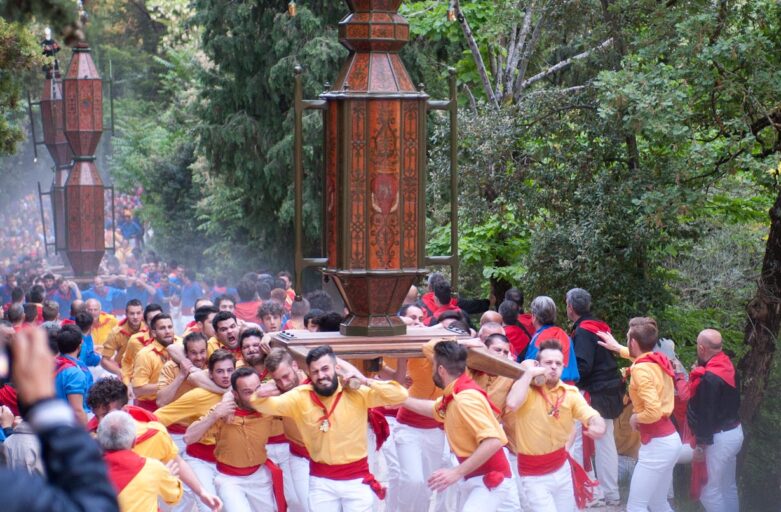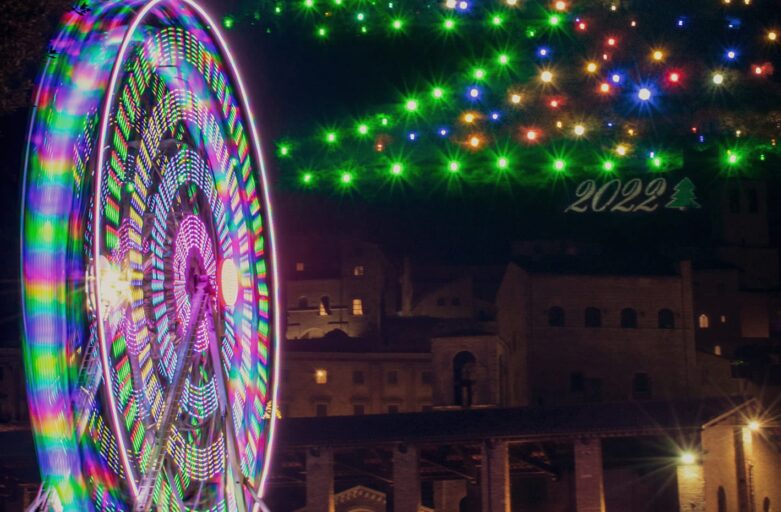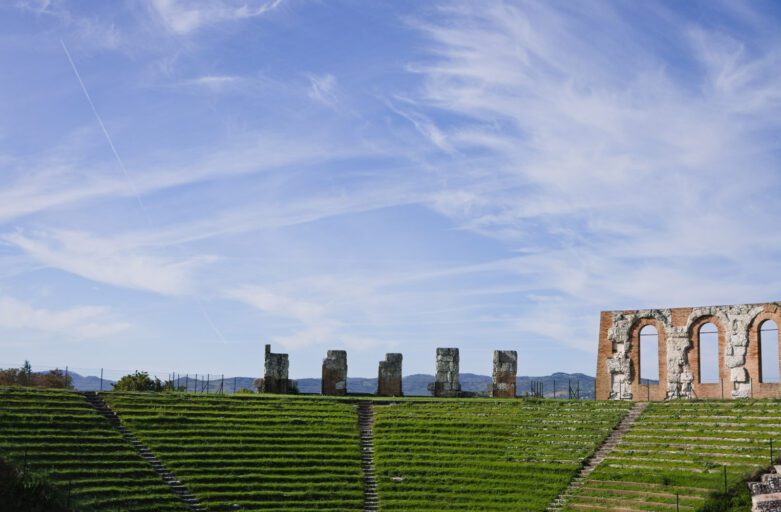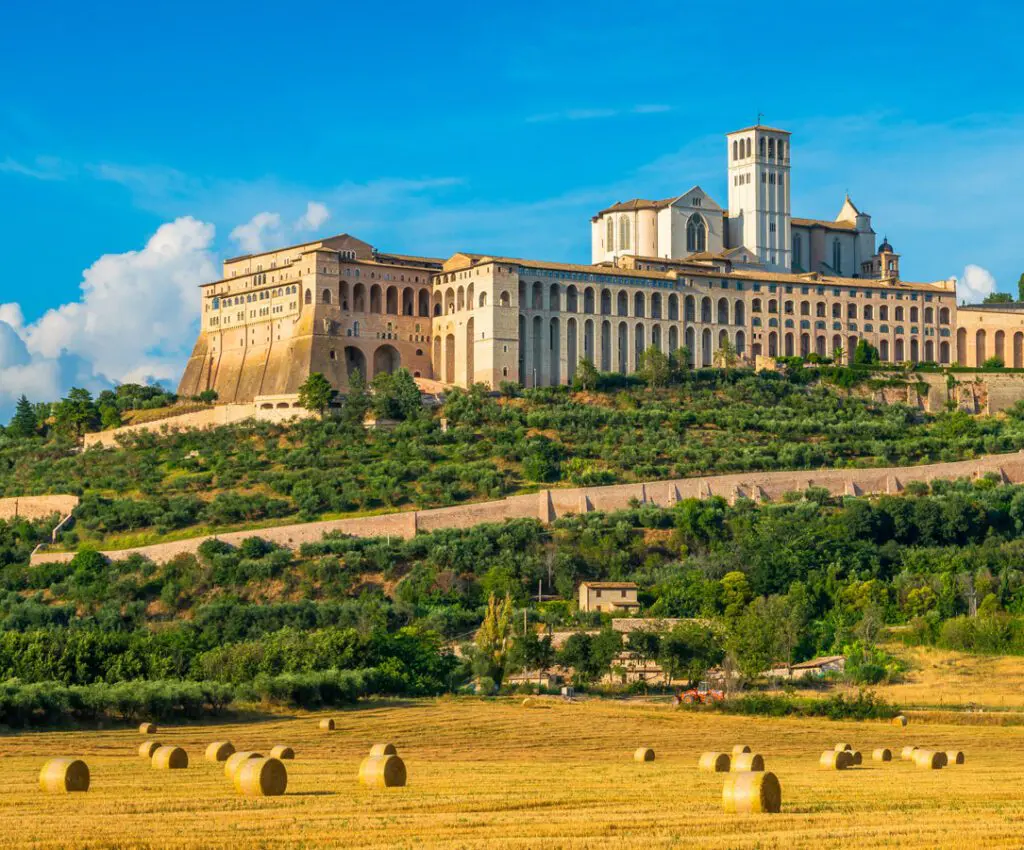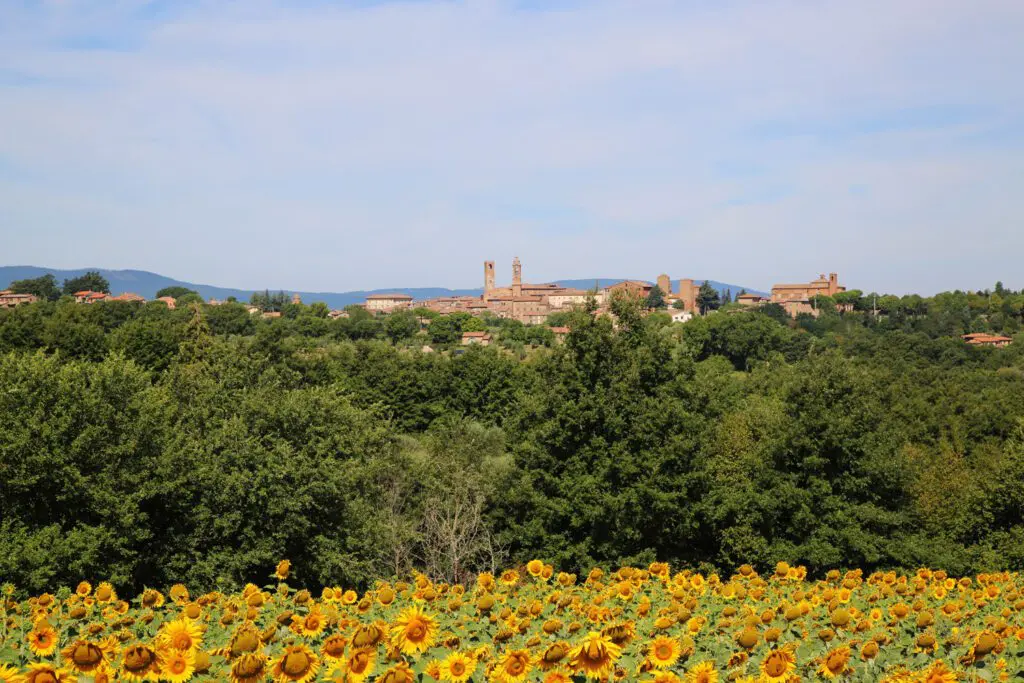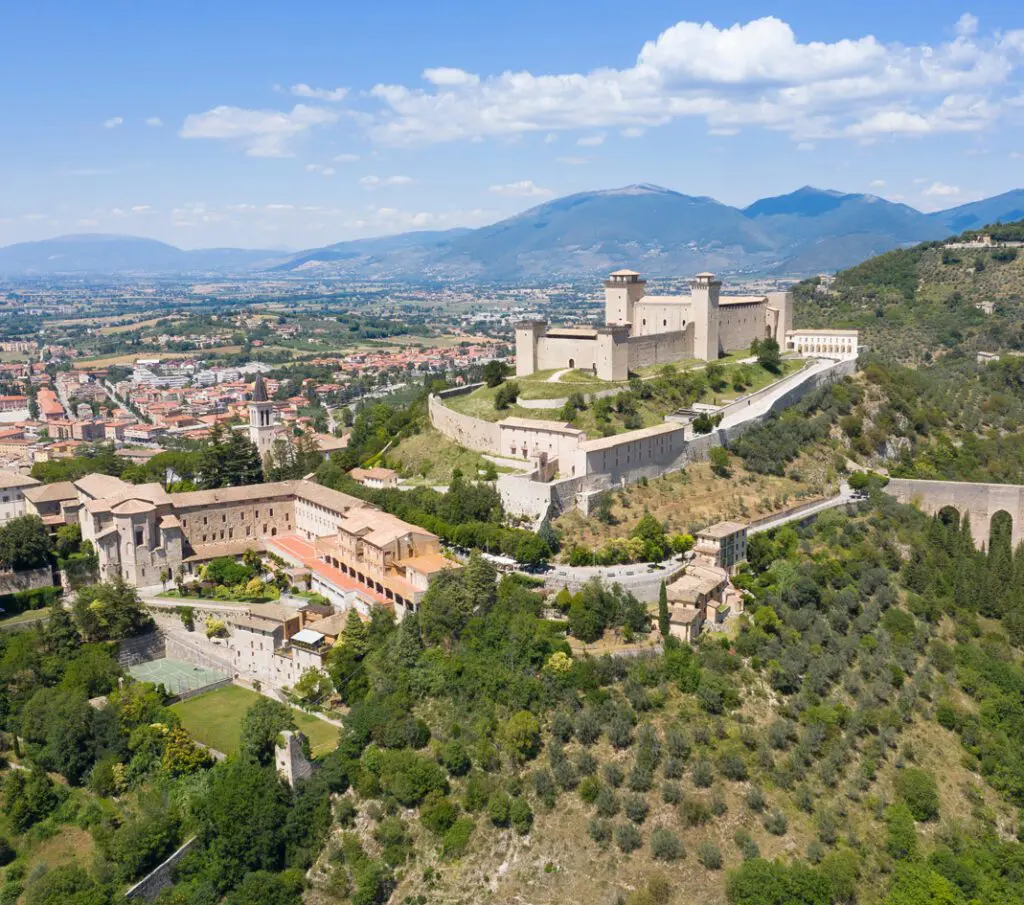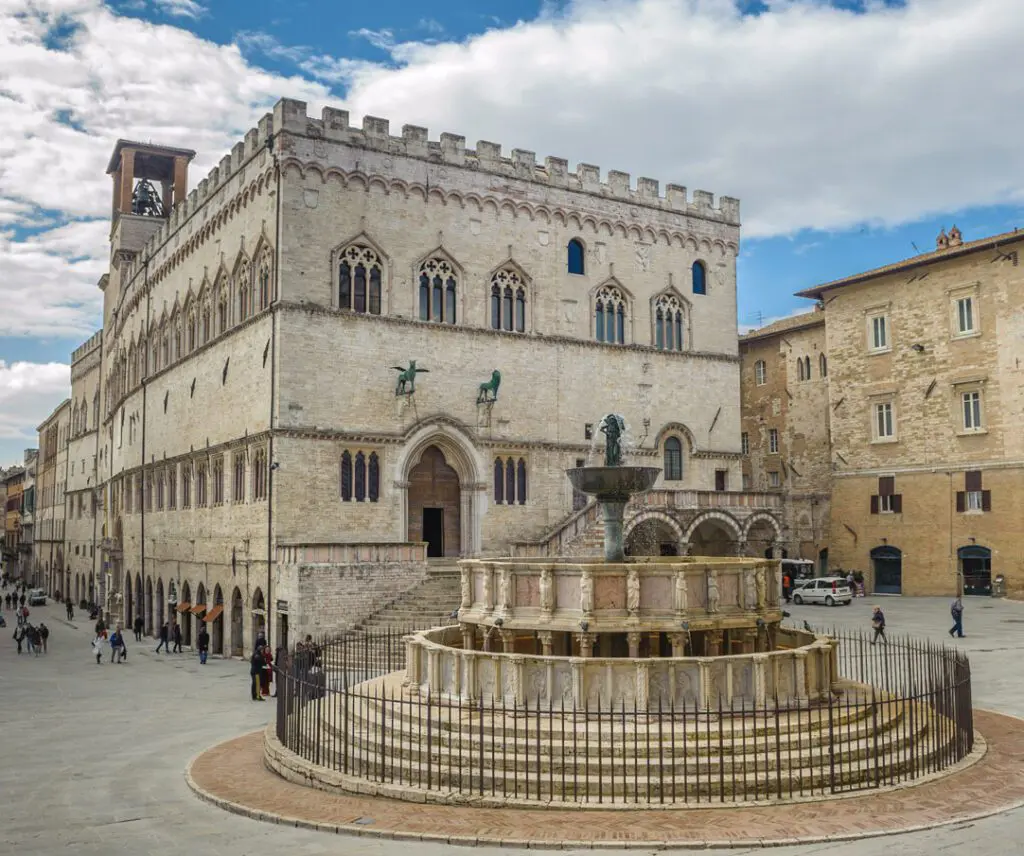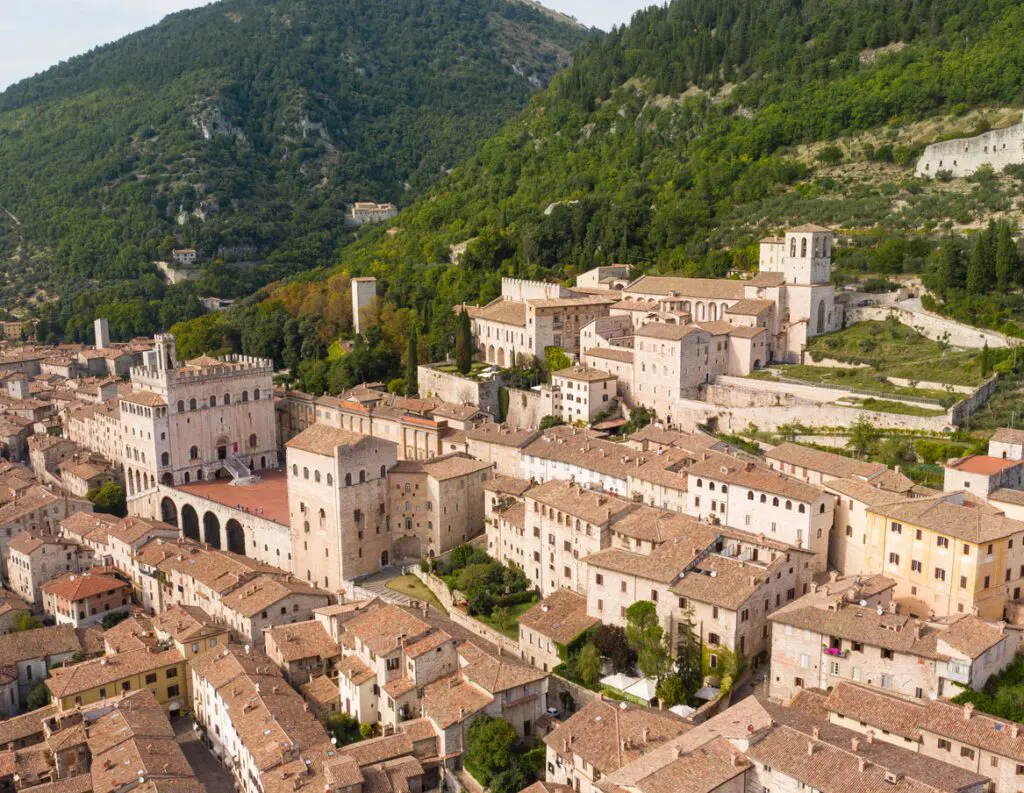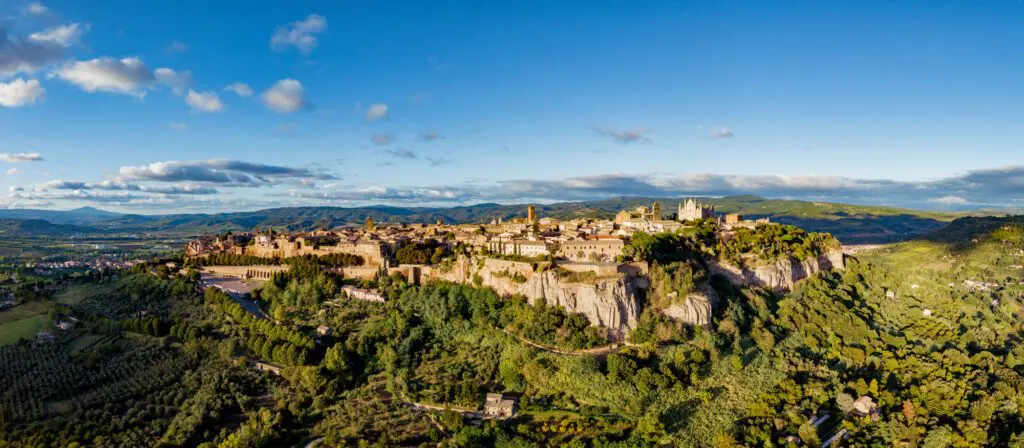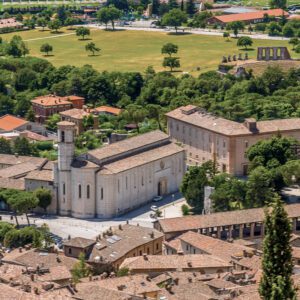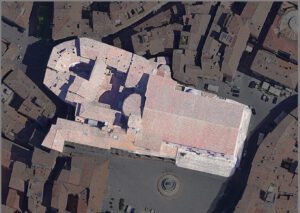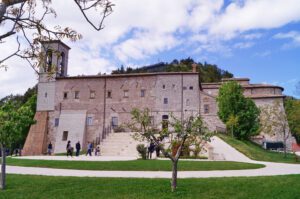At the Court of the Duke of Urbino
The Ducal Palace was built by decision of Federico da Montefeltro in a town area called Corte Vecchia (the Old Court) – right in front of the wonderful Gothic Cathedral dedicated to Saint Mariano and Saint Giacomo, martyrs of the 13th and 14th centuries. The palace was the very first example of Renaissance architecture in Gubbio, which it still overlooks.
The Ducal Palace can be easily recognized by its arched entrance gate with 3D square panels (bugne). The building was designed in 1476-80 by an architect from Siena, Francesco di Giorgio Martini, commissioned by Federico da Montefeltro. The latter was born in Gubbio in 1422, in the nearby castle of Petroia; the son of Guidantonio (Guido Antonio), the Count of Montefeltro, and a noble Gubbio lady, Elisabetta degli Accomanducci. Gubbio in fact had been part of the little Montefeltro State since 1384, and its importance was only second to Urbino.
The Ducal Palace incorporated the Gothic core of the old Guard Palace, plus other Medieval buildings. Since 1905 it is a property of the Italian State; after having been turned into a museum, it hosts a collection of paintings that date back to the 13th - 18th centuries.
The Courtyard
Of particular interest is the trapezoidal cortile d'onore (“courtyard of honor,” namely to welcome important guests), that replaced the square of the Arengo, the Medieval assembly hall.
The bulks of the older buildings were connected by means of two corridors and the airy Renaissance courtyard itself. Here, round arches in pietra serena (a kind of sandstone), all identical, run regularly on three sides. Along the fourth side, just against the containment wall, a walled corridor with windows was designed, supported by small arches upon brackets. The external walls of the upper floors are in red bricks, embellished with small arches and corbels (beccatelli).
Both on the roof ledges and on inside decorations we can read the ubiquitous letters FE/DVX, that is Federicus Dux, “Federico, the Duke” (dux originally meaning “leader” in Latin). That shows that most works at the palace were made in the period between 1474, when Federico was officially appointed the Duke of Urbino by the Pope, and 1482, the year of his death.
The Halls
In the palace interiors, on either the chimneys or the doors, we can still see many decorations with complex symbolical meanings, all of them referring to Duke Federico in one way or another.
The second floor, called piano nobile, has been set up like a 17th century art gallery with its family portraits, and furnished with ancient pieces of furniture and hangings.
The hall for official hearings includes fragments of a fresco of the 13th or 14th century, and a precious door decorated by intaglio carving and inlay work. In this hall, two chimneys appear on the same wall, that suggests that two rooms, side by side, existed here at that time.
At the upper floor, two rooms offer multimedia installations. First of all, a hologram in which Federico da Montefeltro “himself” recalls some key events that occurred during his lifetime. In the second room, a virtual library allows us to leaf through manuscripts and beautiful illuminated books from the vast library of the Duke of Urbino – a clear sign of the attention he used to pay to Renaissance humanists, scholars, and artists.
The Duke's Little Study
Commissioned by Federico da Montefeltro in the years between 1478 and 1482, the Studiolo (Little Study) is the very core of the Ducal Palace. Exclusively meant as a place where the Duke could study and reflect, it was finely decorated in inlay work: designed by Francesco di Giorgio Martini, fulfilled by Giuliano da Maiano.
The pictures in the marquetry include books, musical instruments, heraldic elements, armors, astrolabes, tools for the practice of different branches of science, of which the Duke was an enthusiastic follower. All these objects are shown as if inside closets, accurately designed in perspective, with an extraordinary trompe-l'oeil effect.
The Studiolo we can admire in the Ducal Palace in Gubbio is actually not the original, however: the whole marquetry was sold to the Metropolitan Museum in New York in 1939. Not less amazing, anyway, is the painstaking copy that in 2009 was set in the same place where the original study had existed. It is the outcome of a long labor, and especially of the passion and skills of a workshop in Gubbio, the Minelli Brothers. In seven years, the restorers did not only reproduce the inlay pictures as accurately as possible, they even and exactly repeated the working process as was followed by Renaissance wood specialists, including the same kinds of materials and tools. A super-professional job that looked at past masters so as to provide us with an authorial and authoritative “remake,” truly breathtaking.
The Hanging Garden
The tour finishes with a section on the works exhibited at the Biennial Fair of Contemporary Art in 1956, when it had its location in Gubbio. Among them, some important names emerge, such as Leoncillo, Pomodoro, Castellani. The exhibition also includes posters, catalogs, and photos that provide documentary evidence to the importance of that Gubbio event in the history of contemporary art.
On exiting the Ducal Palace and taking the underlying street, called Via Cattedrale, you will walk under a high vault that will see you to precisely the Giardini del Voltone, “Gardens of the High Vault,” a fascinating viewpoint. The delightful park in fact overlooks the town, with a great vista on the Palace of Consuls and Piazza Grande (the Main Square). And since the place is high on sea level, your eyes will be able to catch glimpses of the hills – even some mountains farther away, for example the top of Mount Subasio, at whose foot Assisi lies.
INFO
Location
Via della Cattedrale, 1, 06024 Gubbio PG
Guided Tours Schedule
Monday:
14:00 - 19:30
Saturday and Sunday:
8:30 - 19:30
Last tour to 19:00
Tickets
Full price 5€
Reduced-price 2€
Under18 Free
Contacts
info@secretumbria.it
